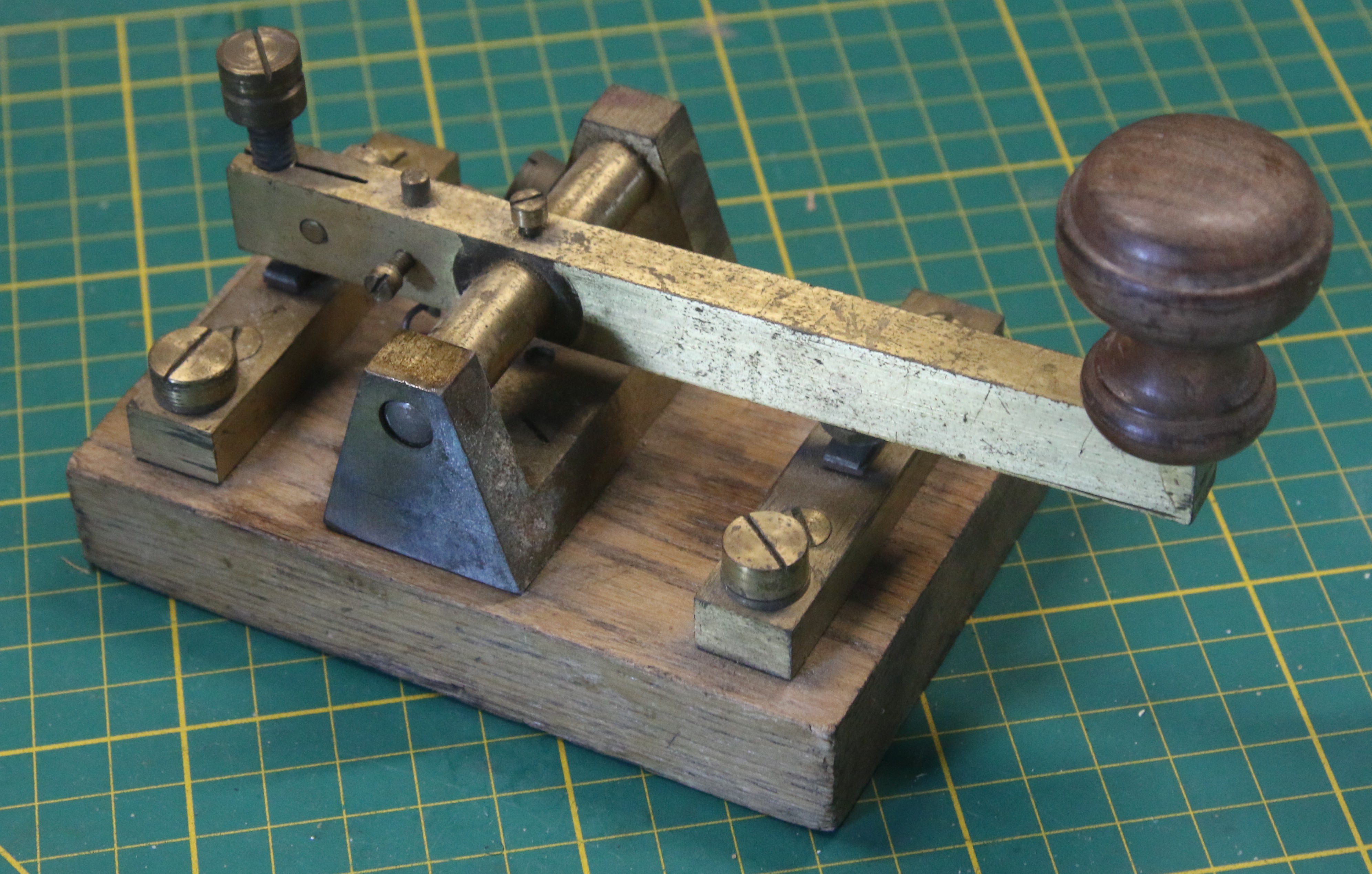The key
I found this straight key in a local thrift store I often visit for various parts and stuff. It was pretty battered, grimy and dusty with some weird hospital green paint on it. I took the unit apart and first cleaned the various parts of the dust and grease. Then I put the metal parts in an acid solution and I sanded the base-plate. Putting it back together, it started to look the business.
The unis is nicely adjustable with various setscrews and stoppers. The amount of force from the spring can be adjusted as well. It seems like a nicely build tough little unit and I wonder what it's original use was. I haven't been able to find a similar unit and there is no labeling or branding to be found. It could be that this key was some project for a course in metal working somewhere, I don't know. I anybody has a clue about the origins of this key, let me know!
The HID
Building a morse HID has been described numerous times on HaD and elsewhere. You get a micro that can emulate a keyboard and get some code to interpret the dit's and dah's, outputting characters and spaces. I had a micro Leonardo lying around which would do just fine. I took some code from the internet and with minor modifications I had a setup that beeped and send characters over USB.
The only real modification to the code I did was a caps-lock feature and some blicky led's
The box
Okay, this is where it gets a bit ugly. Normally I'd get some perv-board and build a simple little shield for the Leonardo to pop into which would then be mounted in a nice case. But you know when something fit's so perfectly as-is, I can't resist but to believe that it was meant to be.
For the box I wanted a nice steam-punky/rustic esthetic. I found a (fake)wood box that held some wine accessories that would fit everything easily. I "prototyped" the electronics on as small breadboard that came with an Arduino starters kit I bought years ago. It's the one with the lasercut wooden base-plate that holds an UNO and a breadboard. To get familiarized with Arduino, this arrangement is fine, but after a while it is quite awkward so I only used the breadboard for small projects.
Viewer discretion advices, It might get ugly from here on out.
Now as it happens, It turned out that the lasercut piece of wood with the breadboard stuck on fitted perfectly in the box, like it was made for it. With a fit so perfect why would I ignore that and build a shield that would add only complexity? I'm not going to spit in the face of fate! Only problem is the breadboard... Not a very permanent solution in general, albeit nothing that a bit of hot-snot can't fix!
So yeah. Hot-gluing the whole thing together may not be the nicest/sanest/correct way of doing it, But when life hands you a perfect fit, you just have to take it sometimes!
I then added a sink-plug sieve as a speaker grill for the piezo element a called it a finished project!. I'd like to say that I tapped this entire project page with my key, but that would be a lie. I often use it in chat sessions, so if you ever "see m e ty qing with stran ge spa ces ever y where" you may assume that I'm using the key!
 Timescale
Timescale








 deʃhipu
deʃhipu

 leadacid44
leadacid44
 David Boucher
David Boucher
Awesome work voxnulla! I love that you actually did use it to drive vim :)